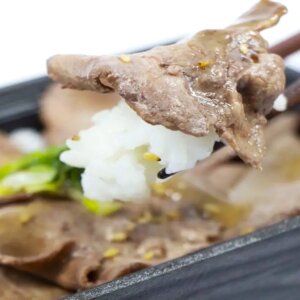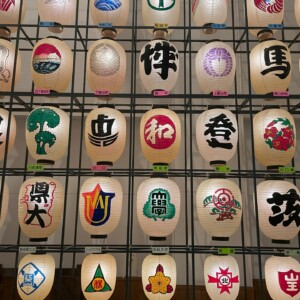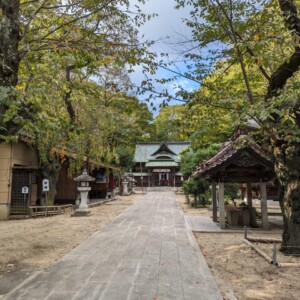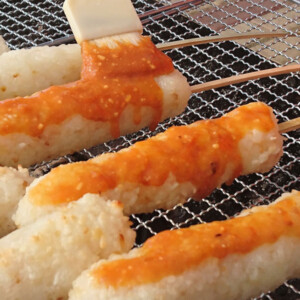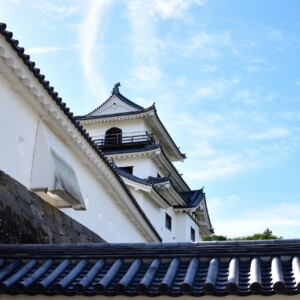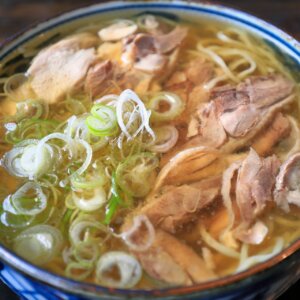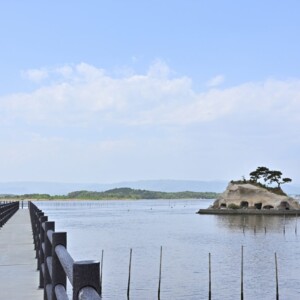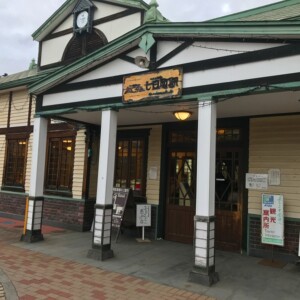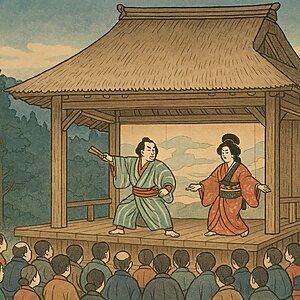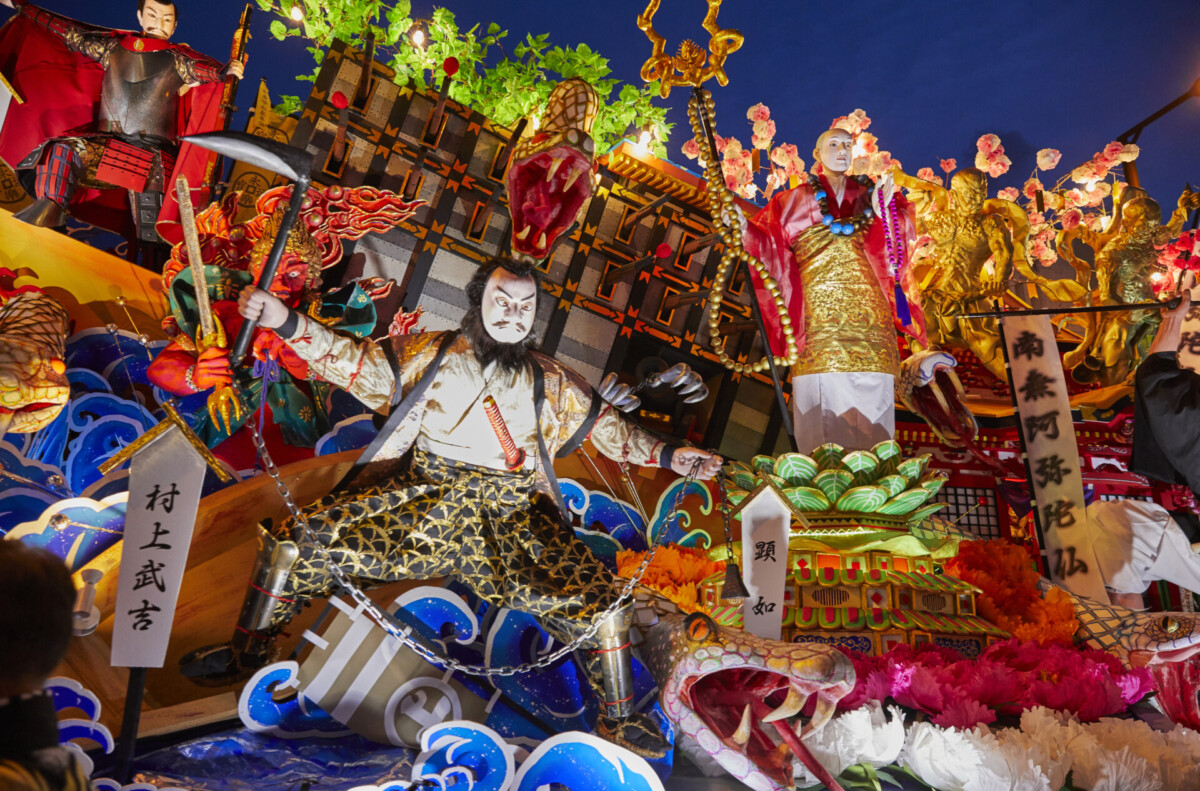
[Recommended Autumn Festivals: Yamagata Edition] Enjoy Yamagata's delicious autumn festival!
table of contents
- 1 When does the "Autumn Festival" start and end?
- 2 What is the definition of festival?
- 3 Murayama Tokunai Festival (Murayama City: August 23rd to 25th)
- 4 Shinjo Festival (Shinjo City: August 24th-26th)
- 5 Shonai Festival (Tsuruoka City: October 6th)
- 6 summary
- 7 Autumn Festival Series of the Six Tohoku Prefectures
If asked, "What is the first festival that comes to mind when you think of Yamagata Prefecture?", many people would probably answer the Yamagata Hanagasa Festival, which is held every year from August 5th to 7th
Yamagata Prefecture is known for its many summer festivals, but autumn festivals are also held throughout the prefecture from the end of August through September, and can be enjoyed along with B-grade gourmet food to savor the autumn harvest
We've picked out some recommended autumn festivals from Yamagata Prefecture and would like to introduce them to you
When does the "Autumn Festival" start and end?
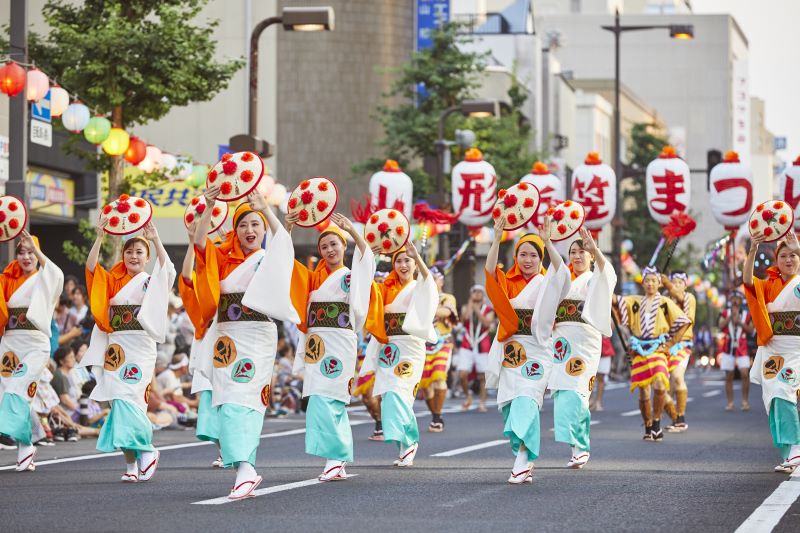
According to the calendar, the ``Ritshu'' of the 24 solar terms runs from August 7th to the day before the ``Risshu'' of November 7th, and if this is applied to Tohoku, it would be the end of the summer festivals held in various places in early August. It's autumn.
we will introduce festivals that take place according to the calendar, from August 7th to November, as " Autumn Festivals
What is the definition of festival?
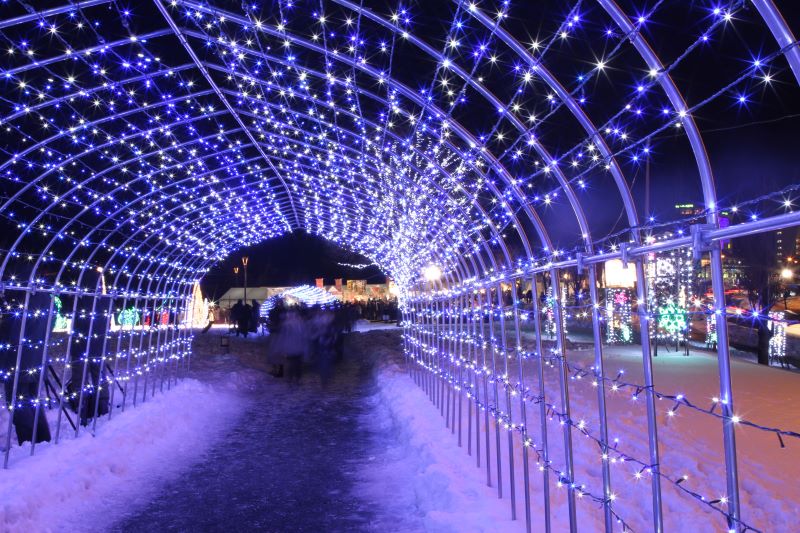
The definition of "festival" on Wikipedia is "an act (ritual) of worshiping gods, Buddhas, and ancestors for the purpose of gratitude, prayer, and consolation
On the other hand, there are ``music festivals'' and ``harvest festivals,'' which are different from the festivals held at shrines and other shrines, which have a long history and tradition, and these events where you can enjoy music and taste are also considered festivals in a broader sense.
In this article, we will introduce not only festivals, but also music festivals, gourmet festivals, and other autumn festivals that are fun to visit
Murayama Tokunai Festival (Murayama City: August 23rd to 25th)
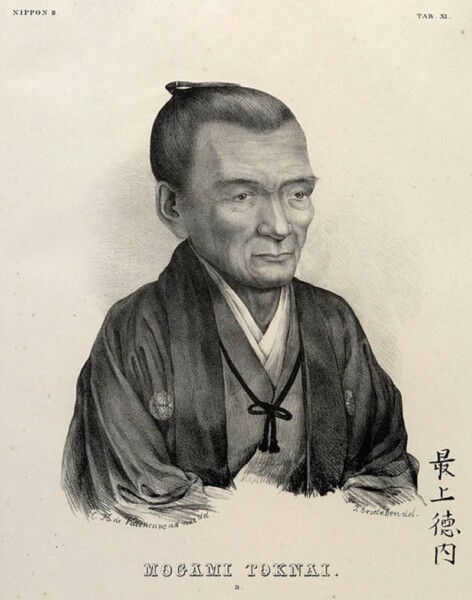
there was an explorer named Mogami Tokunai who was born into a poor farming family in Murayama but was appointed by the shogunate as an explorer of Ezo and made multiple trips to Hokkaido and Sakhalin
was the construction of Shrine in Akkeshi, eastern Hokkaido, which remains to this day as Akkeshi Shrine
Bayashi handed down at Akkeshi Shrine was brought to Tokunai's hometown of Murayama in 1995 (Heisei 7) and began to be played as Tokunai Bayashi
About the birth of Tokunai Bayashi
Tokunai Bayashi was born in 1994 (Heisei 6) when the Bayashi from Akkeshi Town, which was a sister city of Tokunai Bayashi, was invited to the Murayama Festival.
Akkeshi Hayashi is characterized by a heroic lion dance performed to the accompaniment of music played from the top of the floats
The young people of Murayama, captivated by the power of the festival, combined lively music with creative dance to create the Tokunai Bayashi performance. The number of participating groups has gradually increased over the years, and in 2024, 18 groups will be participating
There will be no parade on the evening festival on the first day, the 23rd (Friday), but on the main festival days, the 24th (Saturday) and 25th (Sunday), you can watch performances set to Tokunai Bayashi on special stages and in parades at three venues around the city
Handmade floats and creative dance performances
The floats that the musicians ride on are hand-made by each group every year
The creative dances performed by each group are full of individuality and are well worth watching, but what they all have in common is that they dance while holding and ringing the rattles used in the Yosakoi Festival in one hand
Murayama Tokunai Festival <Information>
- Location: City Fureai Square special stage, shopping street, Fureai Street, Nishiura Street, etc
- Event period: August 24th (Sat) - August 25th (Sun) 2024 (Reiwa 6)
- For inquiries, please contact: Murayama Tokunai Festival Promotion Association (Murayama City Commerce, Industry and Tourism Division)
- Address: 1-3-6 Chuo, Murayama City, Yamagata Prefecture
- Phone number: 0237-55-2111
- URL: Murayama Tokunai Festival Promotion Association Official Website
In the Murayama region, "cold meat soba" is served even in winter
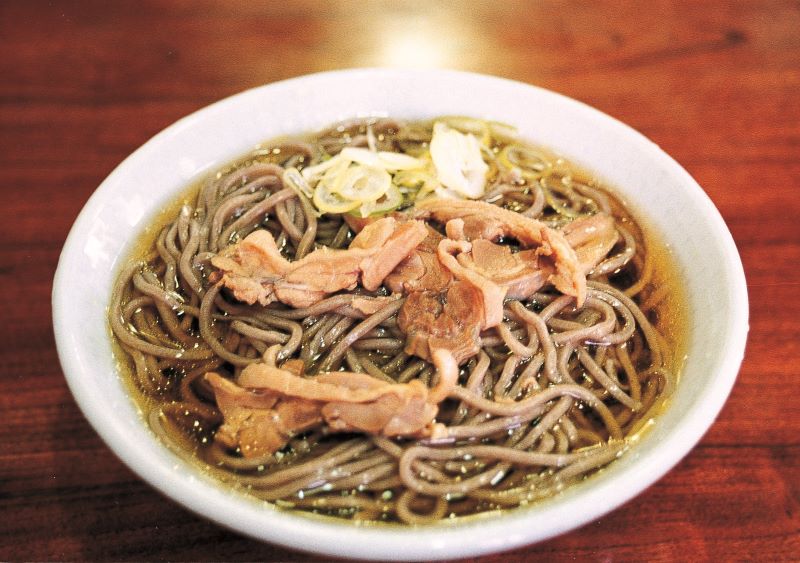
It is said to have originated in Kahoku Town in the Murayama region, but there are many popular restaurants serving it in Murayama City as well, and it is a local dish that is enjoyed by locals even during the cold, snowy winters
The chewy country soba noodles are topped with a cold chicken stock soup with a light soy sauce flavor and topped with chicken and finely chopped green onions
Cold Meat Soba <Information>
- For inquiries, please contact Yachi Niku Soba Kai (Kahoku Town Chamber of Commerce) and others
- Phone number: 0237-73-2122
- URL: Yamagata Prefecture Official Tourism Site "Travel to Yamagata"
Shinjo Festival (Shinjo City: August 24th-26th)
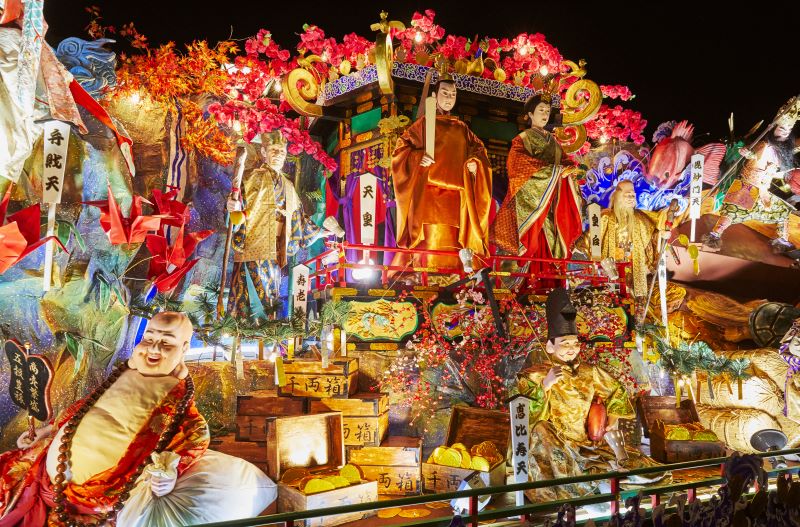
This is the annual festival of Shinjo Tenmangu Shrine in the city, and has a history of nearly 270 years since the mid-Edo period.It has been designated a UNESCO Intangible Cultural Heritage and a National Important Intangible Folk Cultural Property
This festival is full of highlights, including a spectacular parade of 20 floats, a procession of 200 people carrying a portable shrine, and the Hagino Shishiodori and Nitayama Shishiodori
in 1756 (the 6th year of the Horeki era) when Tozawa Masanobu , held a festival for the local Tenmangu Shrine, the local deity, throughout the domain to help his people who were suffering from a poor harvest.
Annual festivals of the three shrines at Shinjo Castle Ruins (Mogami Park)

There are three shrines at the ruins of Shinjo Castle: the evening festival on the 24th is held at Tozawa Shrine, the main festival on the 25th at Tenmangu Shrine, and the final festival on the 26th at Gokoku Shrine, which is considered the annual grand festival
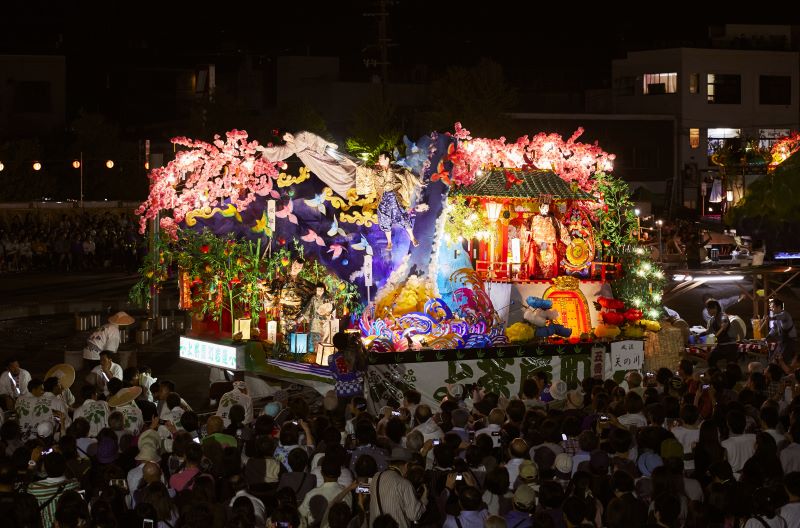
Twenty floats are paraded every day, and music is played all over town, creating a festive atmosphere
Shishiodori dances performed at Mogami Park and around town during the later festival .
Shinjo Festival <Information>
- Location: JR Shinjo Station West Exit Square and other locations around the city
- Event period: Saturday, August 24th to Monday, August 26th, 2024 (Reiwa 6)
- For inquiries, please contact: Shinjo Festival Executive Committee
- Address: Shinjo Chamber of Commerce and Industry, 3-8 Sumiyoshicho, Shinjo City, Yamagata Prefecture
- Phone number: 0233-22-6855
- URL: Shinjo Festival Executive Committee Official Website
What you should try in Shinjo is "Chicken Offal Ramen"
of the B-grade gourmet dishes beloved in Shinjo is Chicken Offal Ramen
This relatively new local dish combines stewed chicken offal, which has long been a valuable source of protein in mountain farming villages, with ramen
The basic flavor is a light soy sauce based chicken broth, but each dish is homemade with ingenuity, and the stewed chicken offal that is placed on the noodles varies in seasoning and the parts used, making it fun to try different dishes as you walk around
Chicken Offal Ramen <Information>
- Contact: Shinjo City Hall, Commerce, Industry and Tourism Division
- Telephone: 0233-29-5848 (Tourism Promotion Section), 0233-29-5849 (Exchange Planning Section), 0233-29-2122 (Ecology Garden)
- URL: Shinjo City Hall official website
Shonai Festival (Tsuruoka City: October 6th)
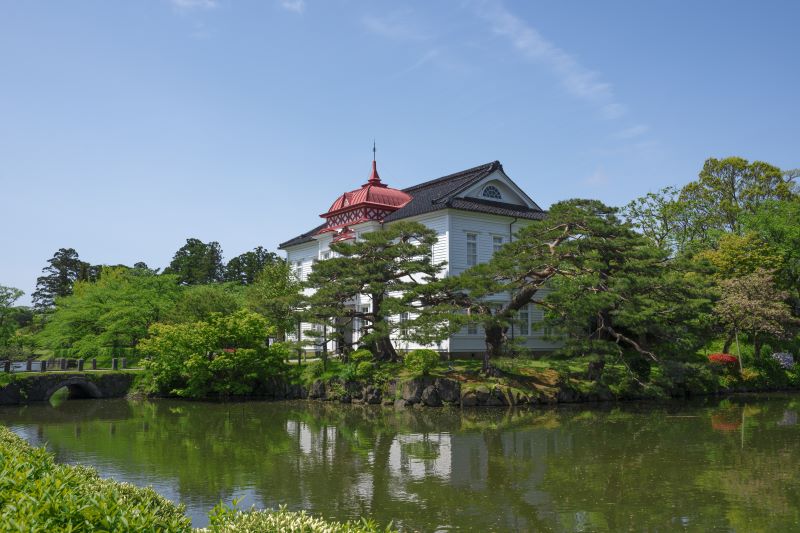
This is the annual festival of Shonai Shrine, which was founded in 1877 (Meiji 10) the site of Tsurugaoka Castle the former residence of the Shonai domain
The enshrined deities are the four feudal lords of the Sakai clan, who were considered to be one of the Four Heavenly Kings of the Tokugawa clan: the first lord , Tadatsugu, the second lord , Ietsugu, the third lord , Tadakatsu, and the ninth lord , Tadanori.
The three feudal lords, from the first to the third, built the foundations of the domain, and Lord Tadanori is enshrined as a wise ruler who restored the domain's struggling finances
are also home to Goshiro Inari Shrine and Tsuruoka Gokoku Shrine, which were built as guardian deities by the Sakai clan lords
The annual festival was previously held on August 15th, but in 2021 (Reiwa 3), it will be held in October as a measure to prevent heatstroke
A magnificent historical picture scroll: "The Procession of Daimyo of the Shonai Domain"
The citizens of Tsuruoka recreate the feudal lord procession of the past, with a total of about 500 people parading through the town, including performers showing off their unique walking style and a procession of armored warriors
highlights include the performance of Kurokawa Noh , a nationally designated important folk cultural property dedicated at Shonai Shrine
Shonai Festival <Information>
- Location: Tsuruga Castle ruins and other locations around the city
- Event period: Sunday, October 6, 2024 (Reiwa 6)
- For inquiries, please contact Shonai Shrine
- Location: 4-1 Babacho, Tsuruoka City, Yamagata Prefecture, Tsurugaoka Castle ruins
- Phone number: 0235-22-8100
- URL: Shonai Shrine official website
A popular gourmet dish in the Shonai region: Yakisoba with added sauce
This gourmet dish was born from customers' requests to have the sauce poured over the meat after it has been cooked, as the flavor of the sauce changes when cooked, and there are famous restaurants in Tsuruoka City, Sakata City, and Shonai Town in the Shonai region
Noodles steamed in soup are topped with meat and vegetables stir-fried in a separate pot, and you can add as much sauce as you like
This yakisoba has a lighter taste than fried noodles that are mixed with sauce, making it easy to eat even if you're feeling tired from the summer heat
Yakisoba with added sauce <Information>
summary
Many areas of Yamagata Prefecture are closed off by deep snow in the winter, so festivals held in the snow-free seasons are grand
In addition to the historic and traditional festivals introduced in this article, there are also festivals where you can taste local cuisine, such as the " Japan's No. 1 Imo-ni Festival ," so you can enjoy not only watching but also eating.









![[Tohoku Six Prefectures] Enjoy Tohoku's summer festivals to the fullest! ~Summer Festival Complete Guide~ 4583385_m](https://jp.neft.asia/wp-content/uploads/2023/07/4583385_m-150x150.jpg)
![[2024 event information] Crimson dances in the city! “Hanagasa Festival” in Yamagata City, Yamagata Prefecture 21_Hanagasa Festival 1](https://jp.neft.asia/wp-content/uploads/2023/07/29cfe6beeea6b0dd9da95fda40464299-150x150.jpg)
![[Tohoku Autumn Foliage Driving Map: Yamagata Edition] 3 Recommended Driving Courses and Local Cuisine! Yamagata Catch](https://jp.neft.asia/wp-content/uploads/2024/10/2c2e7024e6ed08990103582514a5844e-150x150.jpg)
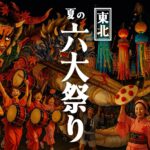
![[Recommended Autumn Festivals: Aomori Edition] Introducing the Aomori autumn festivals and local gourmet food! Aomori Autumn Festival Catch](https://jp.neft.asia/wp-content/uploads/2024/08/5113a23dc13b4a4879e8916209d8913c-150x150.jpg)
![[Recommended Autumn Festivals: Akita Edition] 3 History and Traditional Akita Autumn Festivals Akita Catch](https://jp.neft.asia/wp-content/uploads/2024/08/979a38324ff45520e274bdc0cee6df5e-150x150.jpg)
![[Recommended Autumn Festival: Miyagi Edition] The Date family's majestic atmosphere and music overflowing with the city's city, coloring autumn. Osaki Hachimangu Shrine Catch](https://jp.neft.asia/wp-content/uploads/2024/08/9e204fe4c2c09b329434245a83d1679a-1-150x150.jpg)
![[Recommended Autumn Festival: Fukushima Edition] Autumn in Fukushima is a warrior line and fight festival! Fukushima Catch](https://jp.neft.asia/wp-content/uploads/2024/08/cb34bf6367937424774a9fc363549068-150x150.jpg)

